A Large 18th Century George I Gilt-Gesso Pier Glass, Attributed to John Belchier
£42,000
Follow Us
A Large 18th Century George I Gilt-Gesso Pier Glass, Attributed to John Belchier
A Large and Important George I Gilt-Gesso Pier Glass, Attributed to John Belchier, Circa 1725. England.
Divided by the original arched and rectangular soft bevelled mirror plates within a gadrooned and foliate-carved border surmounted by an impressive foliate crest, flanked by profusly carved scrolling acanthus wings above a punch decorated carved frieze.
John Belchier
‘The Sun’, south side of St Paul’s Churchyard, London; cabinet maker (fl.1699-d. 1753).
This impressive mirror can be confidently attributed to the London cabinetmaker John Belchier based on similarities with two large pier glasses he supplied in 1723 and 1726 to John Meller at Erdigg in Denbighshire, Wales (National Trust; illustrated, Early Georgian Furniture, by Adam Bowett, p.292 plates 6:50-51). Originally destined for the Second Best Bedroom and Best Bedchamber respectively, they now hang in the Saloon.
The earlier mirror shares comparable strapwork cresting with double scrolls centering a mask whilst the second incorporates bold, inward-curving scrolls carved in high relief along the upper border of the frame that overlap onto the top edge of the plate. These distinctive, palm-like scrolls appear on other mirrors attributed to Belchier, among them an example in the Untermyer Collection, Metropolitan Museum, New York (46.116), and a girandole mirror also with a central winged cherub mask in the crest sold Sotheby’s London, 20 November 2007, lot 13.
John Belchier (d.1753), possibly of Huguenot origin, was born in Oxfordshire and served his apprenticeship with the London Joiners’ Company from 1699-1707. By 1717 he was established at ‘The Sun’ in St Paul’s Churchyard, London, where his trade bill described his activities as a supplier of ‘All sorts of Cabinet Work, Chairs, Glasses, Sconces, & Coach Glasses’, and another trade bill indicated he ‘Grinds & Makes-up all sorts of fine Peer & Chimney Glasses and Glass Sconces, Likewise all Cabbinet Makers Goods’, suggesting mirrors and sconces were a particular speciality of his workshop.
His most significant client was the London solicitor and Master of the High Court of Chancery John Meller (1665-1733) for his country estate at Erdigg near Wrexham, and in addition to pier glasses and sconces Belchier provided a magnificent carved and gilt wood State Bed in 1720 and is believed to have supplied two japanned bureau cabinets, another type of furniture with which Belchier’s workshop is often associated.
Condition
Wear consistent with age and use. In superb original condition.
Dimensions
Height: 181 cm (71.26 in)
Width: 75 cm (29.53 in)
Depth: 10 cm (3.94 in)
Provenance
Clopton Hall, Rattlesden, Suffolk
PREVIOUSLY SOLD
No Results Found
The page you requested could not be found. Try refining your search, or use the navigation above to locate the post.
No Results Found
The page you requested could not be found. Try refining your search, or use the navigation above to locate the post.
YOU MAY ALSO LIKE
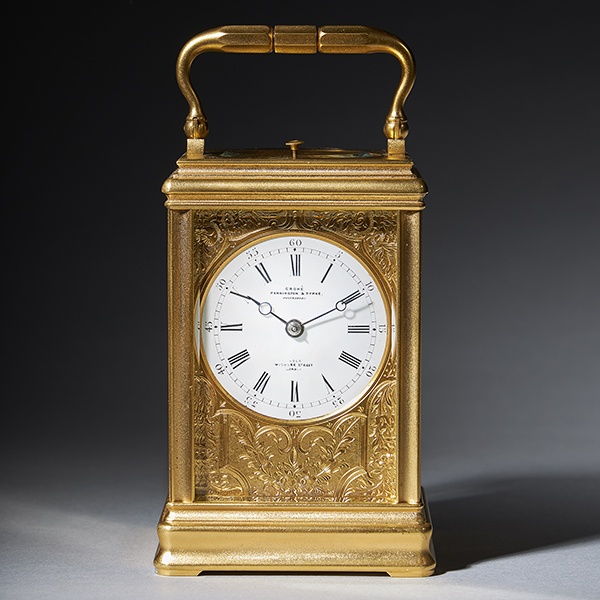
19th Century Repeating Gilt-Brass Carriage Clock by the Famous Drocourt
19th Century Repeating Gilt-Brass Carriage Clock by the Famous Drocourt £5,600 Follow Us19th Century Repeating Gilt-Brass Carriage Clock by the Famous Drocourt A superb repeating carriage clock with a gilt-brass gorge case by the famous maker...
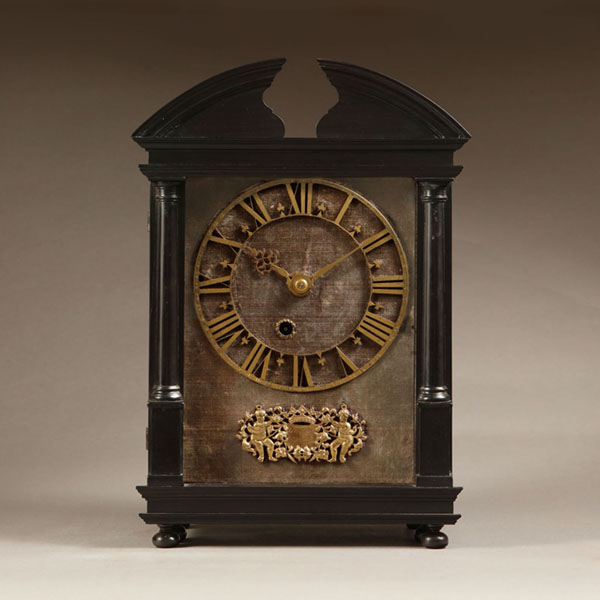
17th-Century Hague Clock Signed by Pieter Visbagh, circa 1675
Small 17th Century Hague clock made c. 1675 by Pieter Visbagh, who was apprenticed by Salomon Coster. The latter made the first pendulum clock according to the instructions of Christiaan Huygens, the internationally renowned scientist who developed the idea of applying a pendulum to a clock movement.
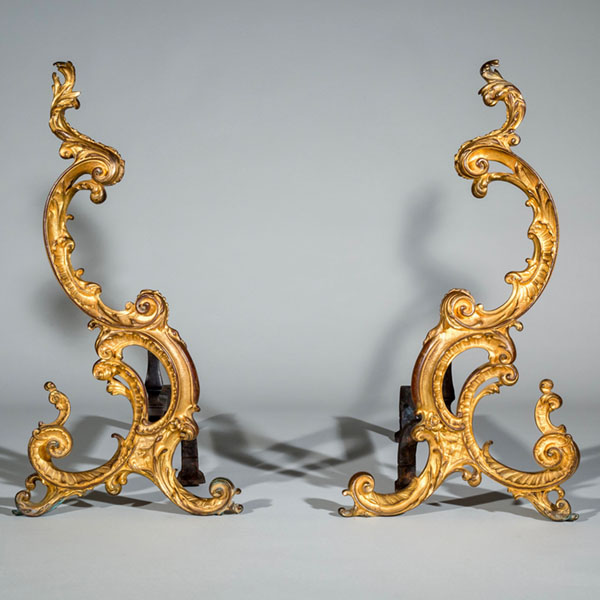
Pair of 18th-Century English Rococo Gilt Bronze Andirons or Firedogs
An exceptional pair of 18th century English Rococo gilt bronze andirons or fire dogs.
The bold shape of these andirons relate to designs of Thomas Johnson (1714–1778), one of London’s pioneers of the ‘Modern’ or French style, later known as Rococo.
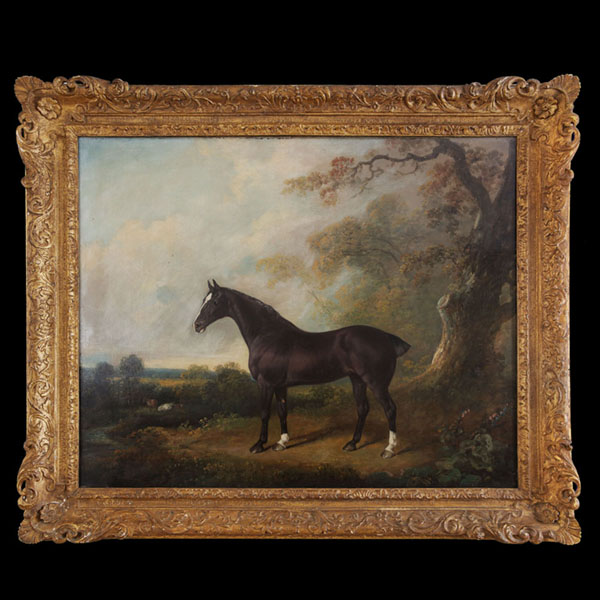
Oil Painting of a Horse Standing Proud in Woodland
Fine Art – Charles Henry Scwanfelder (1774-1837). Signed C H Schwanfelder Pinx and dated 1825. An exceptional portrait of a horse standing proud in woodland, in front of a tree-lined vista incorporating cows residing by a stream.
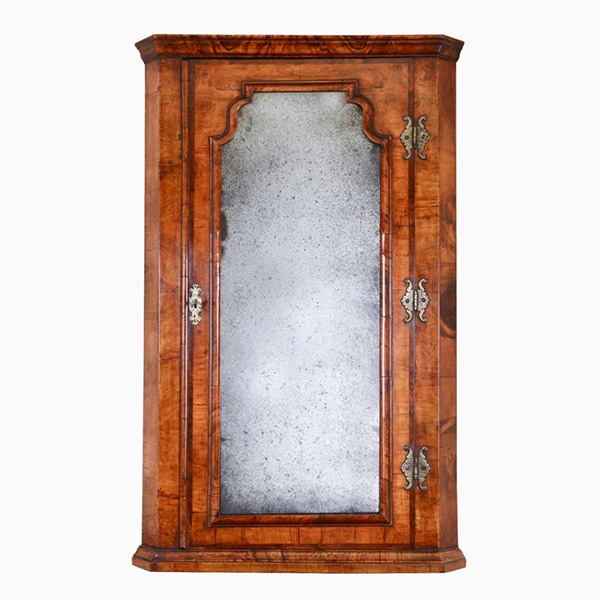
Queen Anne Walnut Corner Cupboard with Bevelled Mirror Plate
A truly remarkable find in original condition. To the door a shaped soft bevelled mirror plate is framed by a cross-grain molding of typical queen Anne design which is further cross-banded, feather-banded and edged to the opening with a single de-molding.

19th Century Repeating Gilt-Brass Carriage Clock by the Famous Drocourt
19th Century Repeating Gilt-Brass Carriage Clock by the Famous Drocourt £5,600 Follow Us19th Century Repeating Gilt-Brass Carriage Clock by the Famous Drocourt A superb repeating carriage clock with a gilt-brass gorge case by the famous maker...

17th-Century Hague Clock Signed by Pieter Visbagh, circa 1675
Small 17th Century Hague clock made c. 1675 by Pieter Visbagh, who was apprenticed by Salomon Coster. The latter made the first pendulum clock according to the instructions of Christiaan Huygens, the internationally renowned scientist who developed the idea of applying a pendulum to a clock movement.

Pair of 18th-Century English Rococo Gilt Bronze Andirons or Firedogs
An exceptional pair of 18th century English Rococo gilt bronze andirons or fire dogs.
The bold shape of these andirons relate to designs of Thomas Johnson (1714–1778), one of London’s pioneers of the ‘Modern’ or French style, later known as Rococo.

Oil Painting of a Horse Standing Proud in Woodland
Fine Art – Charles Henry Scwanfelder (1774-1837). Signed C H Schwanfelder Pinx and dated 1825. An exceptional portrait of a horse standing proud in woodland, in front of a tree-lined vista incorporating cows residing by a stream.

Queen Anne Walnut Corner Cupboard with Bevelled Mirror Plate
A truly remarkable find in original condition. To the door a shaped soft bevelled mirror plate is framed by a cross-grain molding of typical queen Anne design which is further cross-banded, feather-banded and edged to the opening with a single de-molding.






